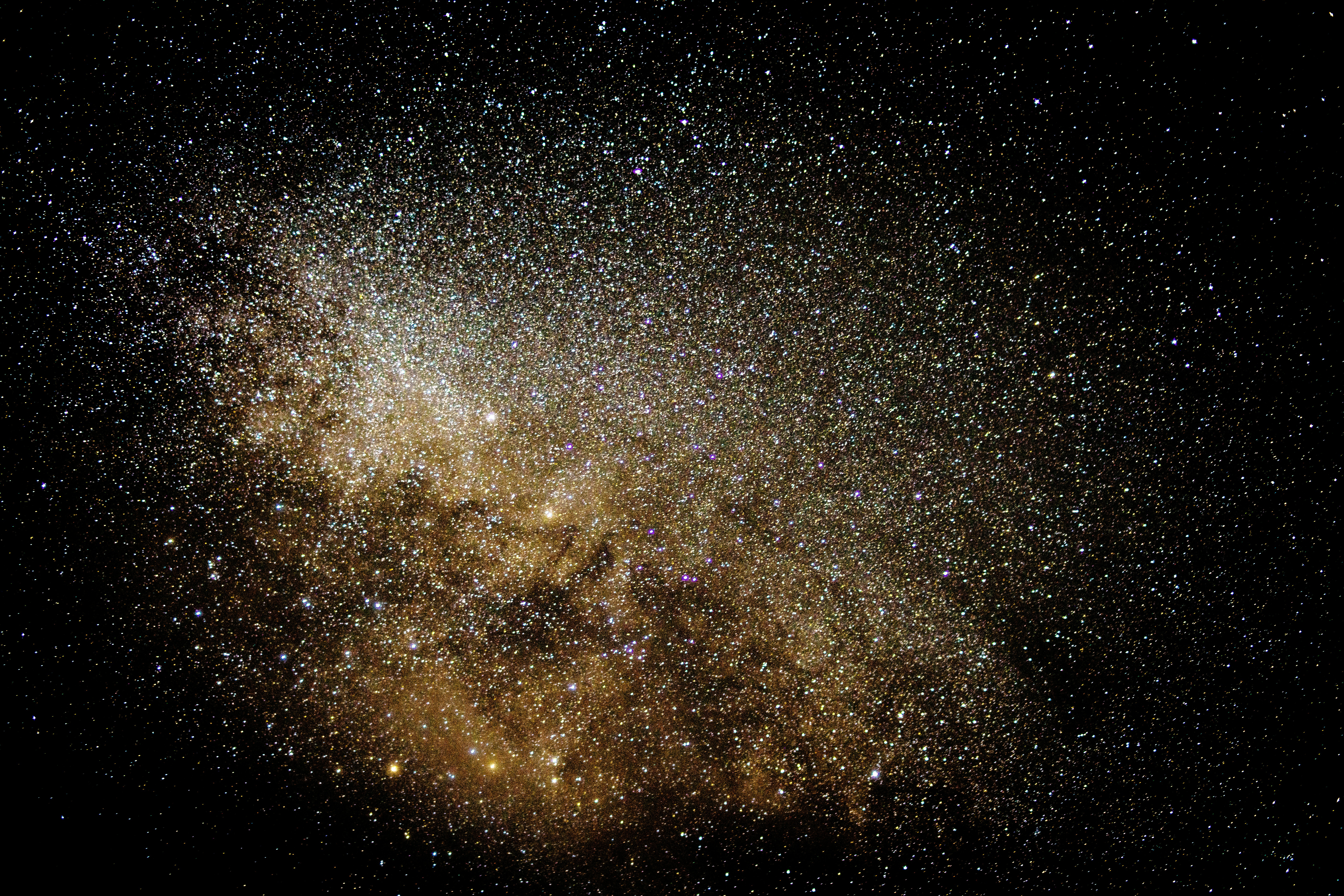This past year, I have seen headlines flash across the start page of my Microsoft browser’s newsfeed that featured articles about the supposed chemical origin of life. Was it the result of aliens seeding our planet billions of years ago – a theory called Panspermia? Or an asteroid bombardment with trace amino acids and nucleic acids, the building blocks of proteins, DNA, and RNA?
When I was a college student, one of my colleagues re-enacted the 1952 Miller-Urey experiment, originally designed to show how unguided chemical evolution could have occurred on a primordial Earth. After assembling the equipment, he evacuated the air using a vacuum pump, and charged the system with water, methane, ammonia, and hydrogen. This was refluxed in the absence of oxygen for a week while a continuous electric spark was passed through the vapor.
How oxygen-breathing organisms could ultimately evolve by random, unguided processes in an oxygen-free, reducing atmosphere was either not thought through or simply ignored by the original researchers. Also apparently ignored was the disproven theory of spontaneous generation, a close cousin to chemical evolution. It had been believed that life could come from non-life – an idea scientists, among them Louis Pasteur, had shot down a century earlier.
Several days into the project, when I asked him how it was going. He turned to me, laughed, and said, “After this, I think I’ll write the Ten Commandments.”
Despite continuing efforts on the part of origin of life researchers to demonstrate a plausible mechanism for unguided chemical evolution leading to greater complexity and ultimately life, none have been successful – not even close.
Even the original Miller-Urey experiment was not unguided. It had been designed. It had utilized designed glassware. The experiment had been conducted in a designed laboratory. There were intelligent designers who collaborated and conducted the experiment. And there was an agreed-upon goal – a guided direction – that the researchers hoped to achieve. If it demonstrated anything, it showed that intelligence always precedes and then guides matter and energy.
Swiss watches are made by Swiss watchmakers. Computer code doesn’t write itself unless coders have initiated the process – even now with the advent of artificial intelligence.
The Gordian Knot of all origin of life research is that in order to make proteins, and almost all other biomolecules that comprise cells, you need molecular machines – enzymes – to do the job of assembly. These are themselves unfathomably complex ensembles of proteins or RNA in some cases.
If you have watched, “How It’s Made,” on the Science Channel, you get the idea. Not only is it fascinating to watch how things are made, but the things don’t just assemble themselves. They are manufactured on machines – robots in some cases – that were designed and assembled by intelligent designers – engineers – for specific tasks. Once again, intelligence and planning precede then guides matter and energy.
Belief in God as The Intelligent Designer was the starting point for much of scientific inquiry through the sixteenth and seventeenth centuries.
“The great pioneers in physics—Newton, Galileo, Kepler, Copernicus—devoutly believed themselves called to find evidences of God in the physical world,” writes Stephen C. Meyer in The Return of the God Hypothesis, his latest book in which he makes a convincing case for the Judeo-Christin origins of modern science. “The founders…assumed that if they studied nature carefully, it would reveal its secrets. Their confidence in this assumption was grounded in both the Greek and the Judeo-Christian idea that the universe is an orderly system—a cosmos not a chaos.”1
The contemporary intelligent design movement originated with the 1996 publication of Michael Behe’s book, Darwin’s Black Box in which the author explains the interdependency of biochemical systems in the cell as being “irreducibly complex,” a term he coined to explain the interdependency of biochemical pathways and the molecular machines that produce the molecules we need for life.
Behe describes in elegant detail the staggering complexity of what were once thought to be simple biological processes. He demonstrates the impossibility of such processes arising gradually through random mutation and natural selection. “If you search the scientific literature on evolution”, he writes, “and if you focus your search on the question of how molecular machines — the basis of life — developed, you find an eerie and complete silence.” Behe likens these molecular machines to “black boxes — a whimsical term for a device that does something but whose inner workings are mysterious.”
Living cells
In Darwin’s day, very little was known about biochemical processes. Two contemporaries of Darwin, Schwann, and Schleiden, had discovered that plants and animals consisted of small bodies called cells. But even they concluded: “The primary question is, what is the origin of this peculiar little organism, the cell?”
Since the discovery of the electron by J. J. Thompson in the late nineteenth century, and the invention of the electron microscope decades later, a window was opened into the ‘Lilliputian world’ of the living cell. The development of X-ray crystallography occurred shortly after the invention of the electron microscope and was the next step that allowed scientists to look one level deeper — into the next black box.
Behe comments, “What was seen was more complexity. It was thought that proteins would turn out to be simple and regular structures like salt crystals. Upon observing the convoluted, complicated bowel-like structure of myoglobin, however, Max Perutz groaned: ‘Could the search for ultimate truth really have revealed so hideous and visceral an object?'”
By the late twentieth century, biochemists came to realize that there were a series of smaller black boxes, one inside the other. Things that were once thought to be simple — the flagellum of a bacterium for example — were revealed to be driven by an extraordinarily complex biochemical machine consisting of multiple parts.
“This level of discovery,” writes Behe, “began to allow biologists to approach the greatest black box of all. The question of how life works was not one that Darwin or his contemporaries could answer. “They knew that eyes were for seeing but how exactly do they see? How does blood clot? How does the body fight disease? The complex structures [involved] were themselves made of smaller components. What did they look like?”
Irreducible mousetrap
Behe introduced the most important concept in his book — “irreducible complexity,” illustrated using a mousetrap, which can be described as irreducibly complex because it requires several essential parts working together if it is to function at all.
The trap is composed of five basic elements: a hammer which impacts and kills the mouse; the spring which drives the hammer; a trigger upon which the mouse steps; a latch which keeps the trap from springing closed until triggered; and a wooden base on which the whole contraption is assembled. A mousetrap is irreducibly complex because in order for it to work, all of its components must be present and assembled in the correct relationships. Remove any one of the five components and you no longer have a functioning mousetrap. Could such a trap evolve from a simpler device?No, for the simpler device would either still have all five components and not be simpler, or it would lack one of the parts and not be functional. In evolutionary terms, if it wasn’t functional, it would have no reason to exist in the first place.
Frustration
Behe extended this simple notion of the irreducible complexity of a mousetrap to a number of complex biochemical systems – vision in the human eye, the clotting of blood and the immune system as examples.
Writing about the cascade of biochemical events necessary for the coagulation of human blood, Behe explains, “The absence of (or significant defects in) any one of a number of components causes the system to fail: blood does not clot at the proper time or at the proper place.”
Writing about the immune system, Behe says, “Whichever way we turn, a gradualistic account of the [evolution of the] immune system is blocked by multiple interwoven requirements. As scientists we yearn to understand how this magnificent mechanism came to be, but the complexity of the system dooms all Darwinian explanations to frustration.”
Will reason ultimately prevail in the origin of life community? Researchers are starting to question seriously neo-Darwinism and some are turning to embrace the theory of intelligent design as the better explanation for the origin of life.
Venki Ramakrishnan was one of three collaborators awarded the Nobel Prize in chemistry in 2009 for studies in the function and structure of the ribosome, the production site for proteins in the cell. Writing in Gene Machine, The Race to Decipher the Secrets of the Ribosome, his own research led him to ponder the deeper question of life’s origins”
How life began is one of the great remaining mysteries of biology… the problem [is] that in nearly all forms of life, DNA [carries] genetic information but DNA itself [is] inert and made by a large number of protein enzymes, which [require] not only RNA but also the ribosome to make these enzymes. Moreover, the sugar in DNA, deoxyribose, [is] made from ribose by a large, complicated protein. Nobody [can] understand how the whole system could have started.2
I am an eternal optimist. Just this past week, an article entitled “How Science Suggests God May Have Created the Universe” flashed across my newsfeed. This almost sounds like Genesis 1:1: “In the Beginning, God created the heavens and the Earth.”
























For the record, this viewpoint does not represent the Palm Beach Atlantic University Department of Biology.
Thomas Chesnes, Ph.D.
Professor of Biology
Palm Beach Atlantic University
There’s a reason academic atheists turned from science to psychology to refute creation: science failed them. Tragically, academia’s abandonment of science is abandonment of truth, and the misery of those who’ve transitioned to a different gender ought to be a wake up call to publically reject nonsense psychology.
I was deeply impacted in college when introduced to the idea of the “God of the Gaps.” There have been many “black boxes” in our knowledge in which it was formerly supposed that God’s activity was the only explanation. But then we discovered the dynamics of the cell, basic forces, planet formation, etc. Then POOF there goes your “God of the Gaps.”
I have my own ideas about this, but I’m wondering if many of these arguments for irreducible complexity will have a theological POOF-moment if/when the dynamics become more fully understood? How do we avoid that?
Thanks for a fascinating article!
You make an important point and ask a good question. Some ID proponents may argue from a “God of the Gaps” angle, but the most prominent leaders of the ID moment do not. The argument is not, “We cannot explain this, so intelligence must have done it.” The best ID arguments are positive; they are based on what we know about intelligence and about nature. Intelligence has a signature and we use it all the time in a variety of disciplines – law, archeology, forensic science, etc. Meyer articulates this point well in many places. The way to avoid a theological POOF-moment is to avoid poor arguments in the first place. Articulate ID from as the positive argument it ought to be.
It’s ironic that after 165 years, Christians are still struggling against biological evolution – the central core theory of the modern life sciences. Further, Christians are not tackling the huge challenge of human behavioral evolution and neuroscience that provide astonishingly elegant explanations for much of human behavior, including Christian behavior. As a friend once commented to me: “If you want to understand why Christians behave as they do, don’t read the Bible, read Darwin.”
Thank you so much for this well-written and succinct summary of the state of origins of life research and the basic tenets of Intelligent Design theory.
I well remember the aha moment when, as a post-doc in Molecular Biology, I stumbled upon Michael Denton’s “Evolution: a Theory in Crisis”. All of the nagging doubts I had about Darwinian evolution were laid bare and explained in detail and from a Molecular Biologist’s perspective. Then I read Philip Johnson’s “Darwin on Trial”, and realized just how much I had been spoon-fed and indoctrinated over the years. Although thinking “outside the box” was encouraged in every area of research I was involved in, it was absolutely condemned if applied to evolution. If you were caught having doubts about the science behind evolution’s claims, you found yourself ostracized from the intellectual community.
I highly recommend the above books, as well as the Behe book mentioned in this article, to anyone interested in thinking for themselves and not simply following along as sheep. Make up your own mind and don’t buy into the prevailing theory just because you are told to.
Although it is true that the Intelligent Design movement has made some changes over time, we need to consider whether these are improvements and if they are theologically sound. But what is ID, anyway? The obvious answer would be design that is intelligent. Christianity, along with many other worldviews, affirms that the universe was designed by an intelligent agent. However, the Intelligent Design movement (ID) makes specific claims about how such design was implemented and how it is detected. Acceptance of the principle that God did create the universe does not require accepting the distinctive claims of various ID advocates. Conversely, some ID advocates hold non-Christian ideas about the designer(s) that they invoke. As a self-described “big tent”, ID includes a wide range of ideas. Each ID claim must be examined and assessed on its individual merits, not uncritically accepted or rejected.
Any “big tent” view will be challenging to define. In our increasingly polarized culture, saying “we think this and they think that and those others think something else, but we can all get along” could be good. But often ID is marketed as agreeing with whatever the target audience holds, rather than publicizing the diversity.
The ID movement tends to focus on two different types of perceived evidence of “design.” One is “front-loading”, the design built into the laws of the universe form the start. This argument claims that numerous seemingly independent laws have to be exactly the way that they are for intelligent biological life to exist, and that this suggests that those laws were designed. Claims to assign specific probabilities to the likelihood of natural laws being the way that they are cannot be justified, but it is reasonable to say “this seems very unlikely to me to happen by chance”. (Claims that a multiverse explains away this problem are also untrue.) The other major category of ID claim is that there is a gap that natural laws can’t explain, requiring intervention-style action by a designer to achieve. These two are somewhat in tension – a thorough job of designing the natural laws should decrease the need for intervention-style action.
Much popular ID focuses on claiming that evolution has problems and that ID will soon become the new dominant paradigm. Despite the fact that ID has not gained any significant scientific following among Christians with research expertise in evolution, much less in science in general, the claims that ID is making great achievements haven’t evolved much. Anti-evolutionary ID, like creation science before it, has fallen into the atheistic error of claiming that God isn’t at work in natural processes. “You’re either created by God or by mindless molecular processes” is catchy, but terrible theology. Molecular processes are creating you out of your lunch right now. Many other molecular processes have been essential to all of the steps in creating you from conception to now. None of those molecules have minds. Any claim that evolution is an alternative to God’s working is an unbiblical denial of God’s providence.
The claimed problems for evolution are not good. For example, evolution of oxygen-dependent organisms starting from an anoxic environment is easily understood. Although most animals and other eukaryotes depend on oxygen, most don’t need nearly as much oxygen as we do. Within the Eubacteria and Archaea, many kinds require anoxic conditions, many tolerate oxygen, some can use oxygen if it’s available and do without if it isn’t, and many need oxygen. It only takes a spark to find out that oxygen is very useful for getting a lot of energy out of organic molecules, even though oxygen is also very useful for causing mutations. So, as oxygen became available from photosynthesis and possibly from abiological reactions, it’s hardly surprising that some organisms developed an ability to use it.
However, different ID advocates vary widely in what evolution they accept and what they reject. Perry Marshall and Michael Denton affirm that evolution covers all of the process of creating life from non-living material, but that evolution by natural selection operating on the range of variation produced by mutation and genetic recombination needs to be significantly modified to include the effects of factors such as symbiosis, lateral gene transfer, developmental plasticity, etc. Such arguments for an “extended evolutionary synthesis” are not confined to ID. But they are in part a subjective assessment of what constitutes a need for “significant modification” versus merely being updating.
A fundamental theological problem of the ID movement is that it seeks to treat God as a hypothesis. The Bible sees God as the foundational axiom, not a hypothesis. In Romans 1, Paul warns that the search for God from what we can see only leads to idolatry. Rather, we need to know God from His self-revelation in Scripture. Based on that, we see His hand in everything. By seeking a generic designer, supposedly demonstrated by science, rather than being based on the Bible, ID is not a Christian apologetic. For example, Jonathan Wells, whose work is still influential with the Discovery Institute after his recent death (e.g., the book “Icons of Evolution”), asserted that Christianity is not about faith in Jesus Christ but about attacking evolution. This assertion was Wells’ excuse for claiming to be a Christian while holding that Rev. Moon was the true messiah. Similarly, despite the claim of one academic cited on the Wikipedia page, the Raelians are definitely not Christian. They claim that Jesus, like “Rael”, received secret information from space aliens. Their support of ID comes from their claim that humans were created by aliens using cloning technology. They made headlines two decades ago by claiming that they had made babies using cloning technology, dropping out of the headlines when no evidence was forthcoming. Given the Raelian support for “free love”, there’s good reason to think that the babies were made by more traditional methods. Christians can work with non-Christians on matters of common concern, but claiming that ID is Christian and claiming that ID is purely scientific with no regard for theology do not go together.
Many of the criticisms of ID have been refuted. “They don’t have any peer reviewed articles,” is an old canard spoken by those who haven’t updated their mental database, probably due to the fact that they are Neo-Darwinists themselves, and refuse to read any of the recently published papers and books. While these ID critics claim ID is not based in science, they make this assertion, firmly believing that Neo-Darwinism is. Well, it’s not. It’s based in philosophical materialism. Apart from micro-evolution which most certainly can be demonstrated empirically in the laboratory (fruit fly mutations (never improvements), bacterial resistance to antibiotics, etc.) and small changes over time due to environmental factors (finch beak size, the obvious example — never mentioned by Darwin in his book by the way), there has never been any empirical or historical evidence for macro-evolution.
Since Neo Darwinism is the prevailing view among biologists, biochemists, and OOL scientists, there is an ideological barrier to peer review ID papers. (Nonetheless, here is a list of ID authored and peer-reviewed papers compiled by the Discovery Institute: https://www.discovery.org/id/peer-review/ ).
Another criticism of ID is that it only provides negative evidence against the possibility of evolution. This is also a canard. (See “What is the Positive Case for Design” by Casey Luskin in The Comprehensive Guide to Science and Faith, p. 175 among other examples).
My major criticism of ID is reflected in David Campbell’s commentary above. We should start from the scriptures and recognize that God is the Intelligent Designer, not some alien or non-personal force.
I do find the ID arguments powerful as arguments against blind, unguided chance. Their strength comes from [im]probability, the various definitions of information (Shannon information, etc.), intuition about how the world works, common sense and therefore, common science, the unfathomable complexity of molecular biology, and Behe’s irreducible complexity argument, applied to many molecular processes and molecular machines.
This is wonderfully illustrated by DNA replication and transcription. Both require numerous, complex proteins (enzymes) that are engaged in simultaneous processes at the molecular level inside the nucleus of eukaryotes. At least a dozen proteins, composed of multiple parts along with nuclear RNA are required to replicate DNA. Where do these proteins come from? They are produced from the information in the genome (DNA). And what is the process by which proteins are made? By a process called transcription, which gets its start from proteins that initiate the process. These proteins unwind and transcribe genes from DNA to strands of RNA. The RNA transcripts are then transported outside of the nucleus to a another molecular machine called a ribosome where proteins are assembled from amino acids based on the code on the RNA transcript.
There is no chicken – egg explanation here. Neither came first. In order for DNA to transcribe RNA to manufacture proteins, proteins had to be present to begin with. Someone had to assemble this before sending it along its merry way. In other words, both the chicken and the egg had to be there at the beginning. No random, unguided process can account for this.
I’m with Venki Ramakrishnan — I have no idea how this got started and no one else does either, (except God).
I feel like Job, whom God asked rhetorically: “Where were you when I laid the earth’s foundation? Tell me, if you understand. Who marked off its dimensions? Surely you know! Who stretched a measuring line across it? On what were its footings set, or who laid its cornerstone—while the morning stars sang together and all the angels[a] shouted for joy?
ID has its good points. The Discovery Institute’s books, papers, podcasts, and literature have something worthwhile to say. Their arguments have a worthy place on college campuses in science, philosophy and theology classes. They have found their way into my chemistry classes on numerous occasions and — obviously — here in this essay. I also believe that Darwinism should be examined too, but critically. College students need to be exposed to both theories. But they should be presented as theories, not as facts.